skin calming booster reviews
A must for dehydrated skin that’s anxiously awaiting a glow, Pixi’s rose-infused serum contains softening aloe vera and moisture-boosting glycerin in its delicate formula.
Skin That's Both Dehydrated and Sensitive? Then You Should Try These Serums

Sensitive skin is usually subject to the “you can’t sit with us” vibe from a lot of skincare products. No one deserves to be left out from the beauty conversation, but as so many skincare products come packed with potent ingredients that can irritate skin, it can often feel that way.
If your skin is dry or dehydrated on top of being sensitive, then it can feel even more frustrating to find a balance of ingredients that will add ample moisture without suffocating the skin. But serums can really help, especially if you choose wisely. There are plenty of formulas out there that contain just enough of an active ingredient to make a difference to the moisture levels of the skin without sending sensitive complexions into an irritated frenzy. We’ve done some digging and pulled out the best hydrating serums for sensitive skin.
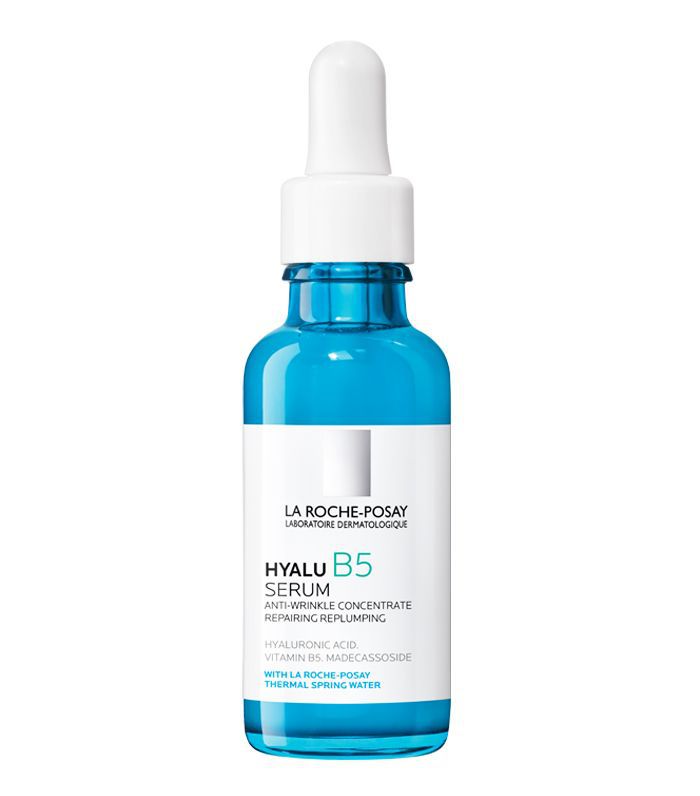
With mighty moisturizer hyaluronic acid and repairing vitamin B5, this product leaves users with plump and smooth skin, sans irritation.
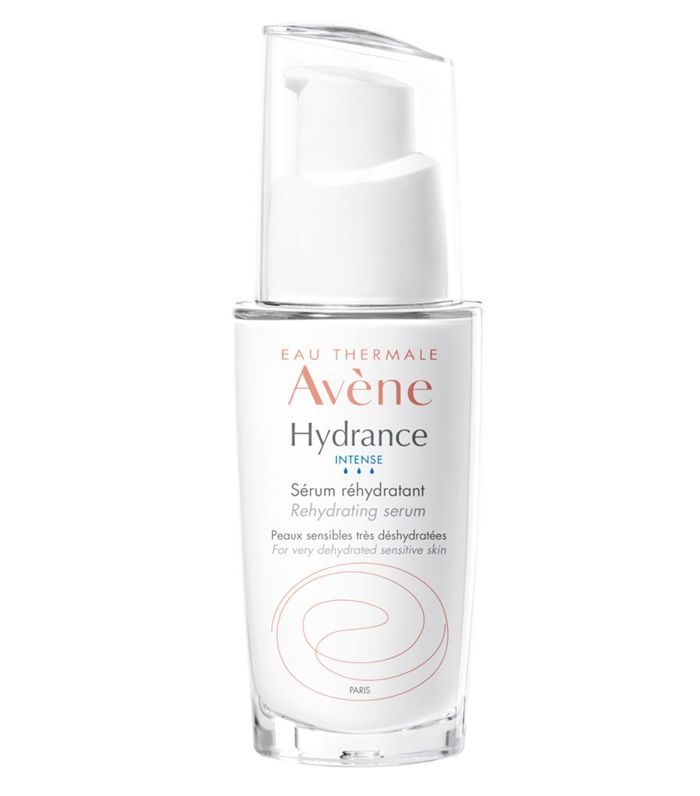
This serum is as thirst-quenching for your skin as reuniting with your water bottle after a HIIT workout. The calming formula restores the skin's barrier and softens, without weighing your face down with product.
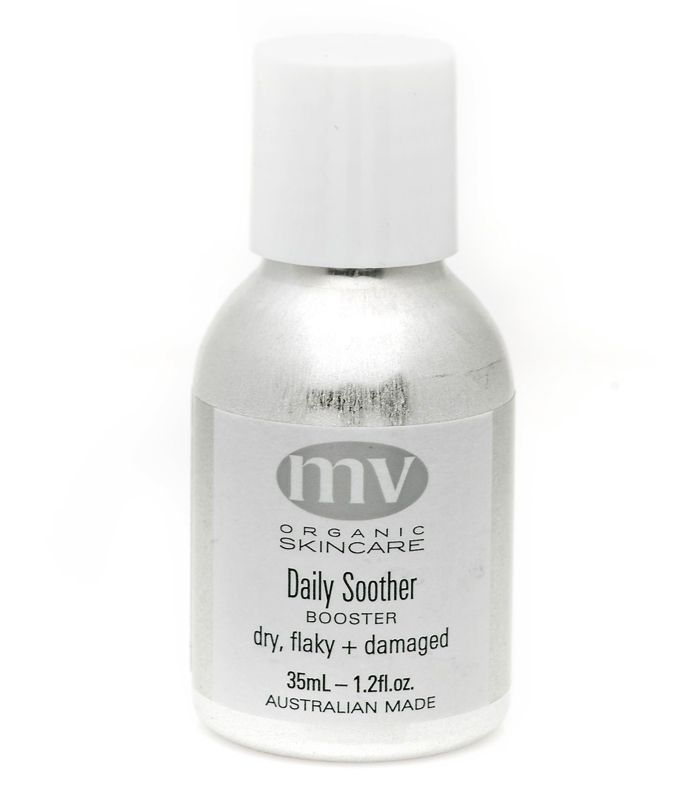
This is an all-in-one, first-aid kit–worthy remedy for sensitive and dry skin. The skin-saving formula is brimming with organic ingredients like calendula and chamomile oils meant to nourish, reduce inflammation and calm redness, all at the same time.
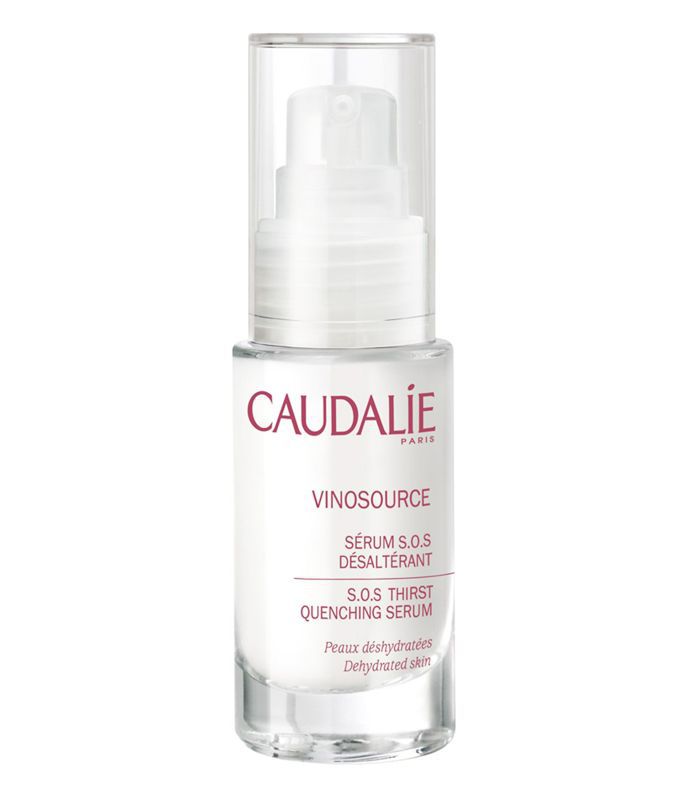
This option proves that lightweight formulas can still deliver intense moisture. Once you feel how refreshed your skin is after using Caudalie's serum, you'll be counting down the minutes until you can reapply it.
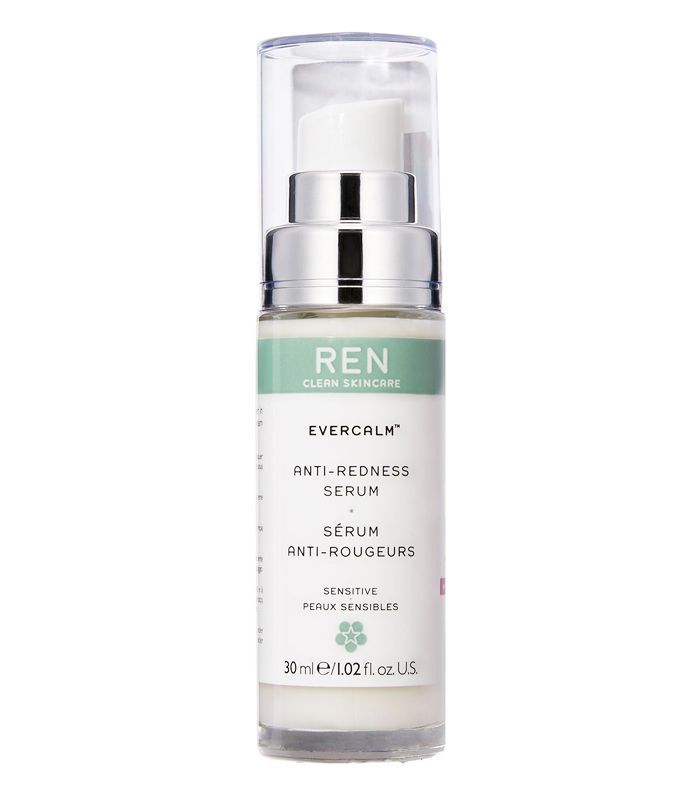
Whether you're having milk and cookies or a hot chocolate, milk is an instant comforter, and it works similarly in this serum. Milk proteins are meant to work on reducing flaky skin while the rest of the moisturizing formula tackles redness and inflammation.
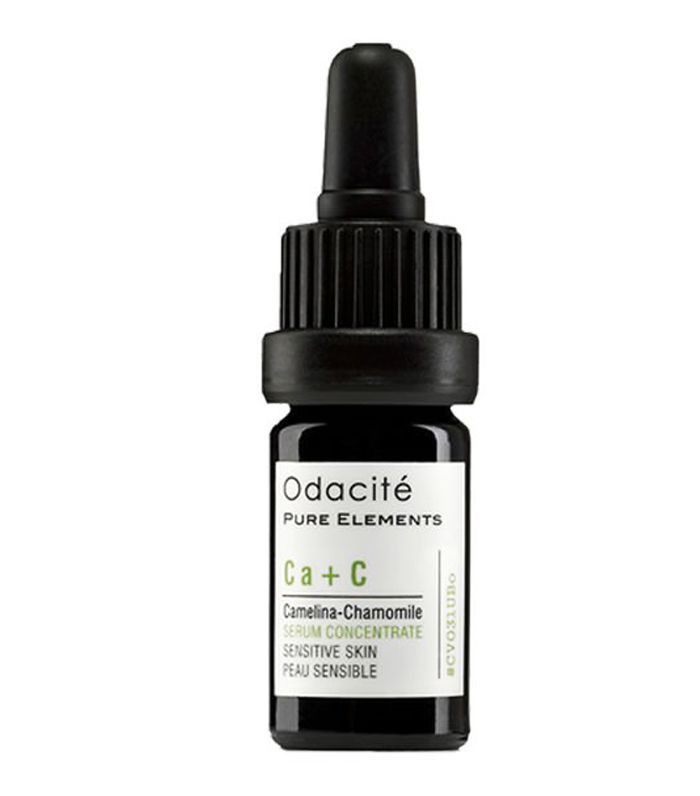
Camelina and chamomile oils team up in this serum to reduce inflammation and redness while healing the skin. They also work together to create a relaxing scent that will calm you down when your skin is overreacting.
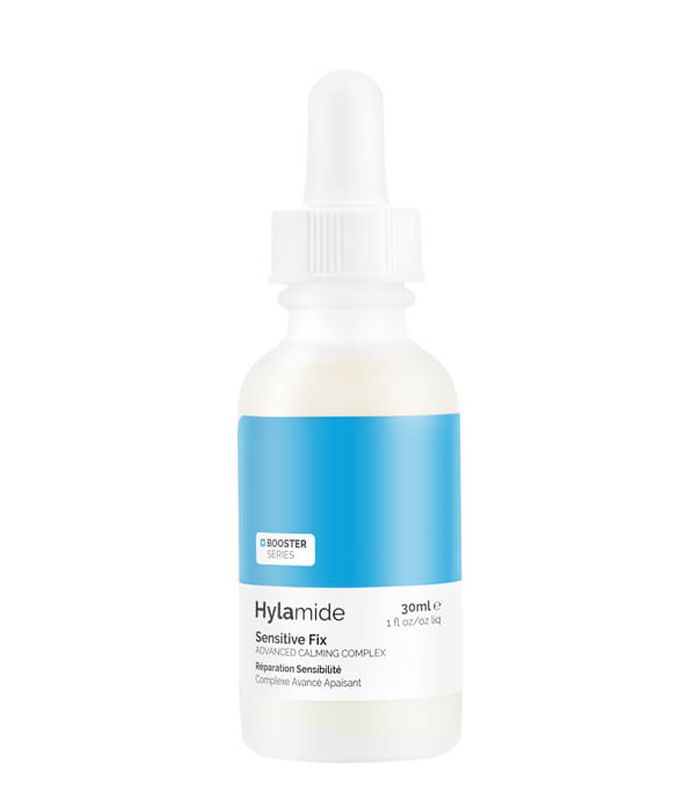
Consider this your own version of taking a chill pill; it's just what your sensitive skin has been looking for to help with irritation. It contains plant extracts that are meant to reset the pH level of the skin to help ward off sensitivity.
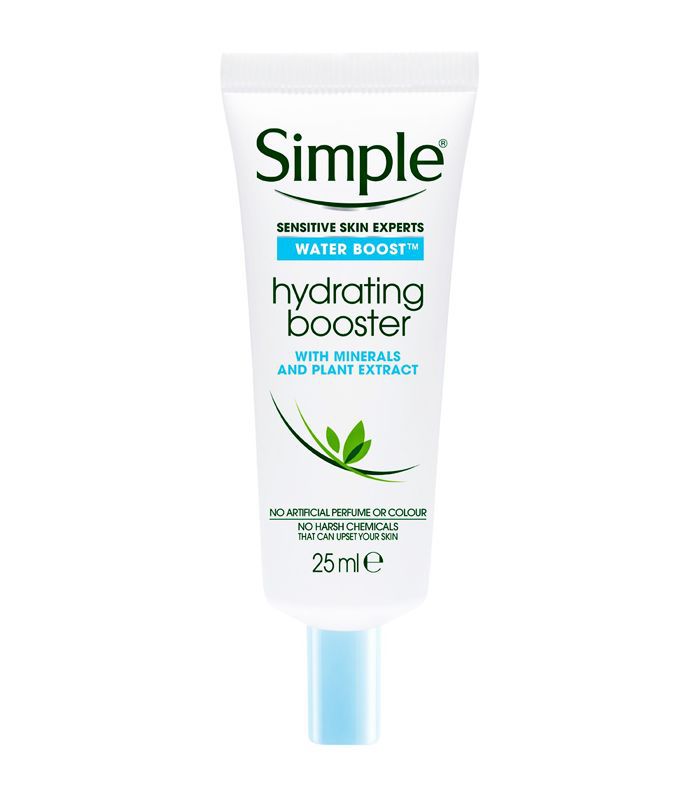
There's a reason Simple is a brand known for its expertise in dealing with sensitive skin, and this booster offers irrefutable proof as to why. When applied before your moisturizer, the Pentavitin in this formula promises to stop moisture from escaping from the skin.
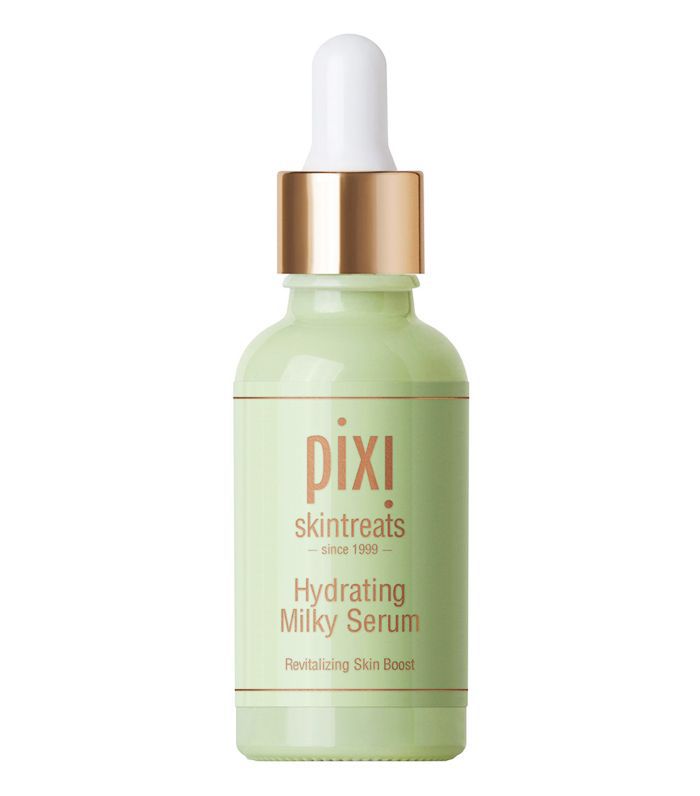
A must for dehydrated skin that’s anxiously awaiting a glow, Pixi’s rose-infused serum contains softening aloe vera and moisture-boosting glycerin in its delicate formula.
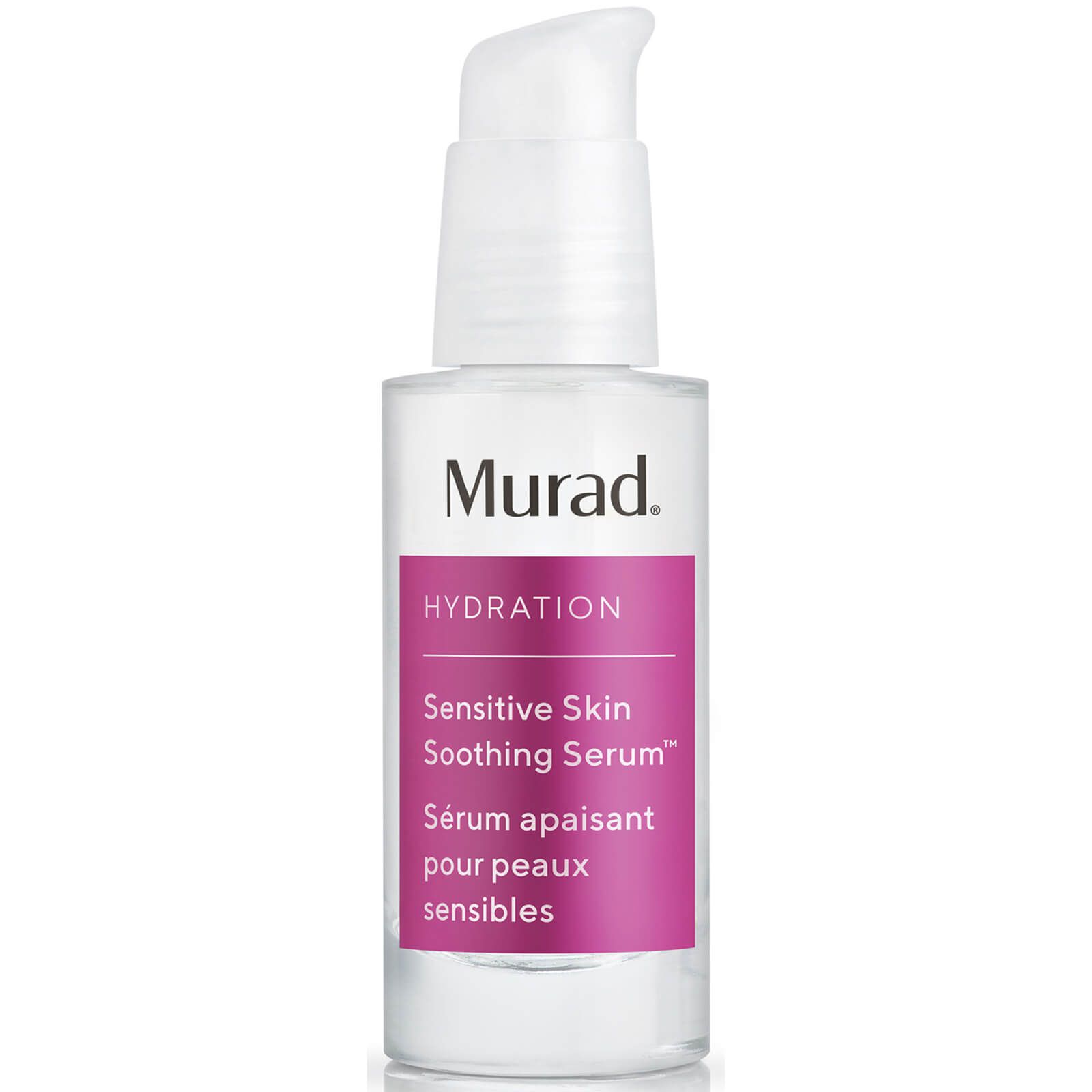
The feeling of tight skin is nearly as uncomfortable as the classic fingernails-on-the-chalkboard scenario. Fortunately for us, Murad has a solution in the form of this calming serum that locks in moisture and dials back the redness that so often goes hand-in-hand with sensitive skin.
Before you even think about giving up on your skin, give one of these multi-tasking serums a try to make your routine more effective.
Lavender, patchouli and chamomile work instantly to soothe irritated skin, reducing redness and inflammation. The aromatic neroli and rose increase skin elasticity and leaves your skin feeling calm, toned and radiant.
Each morning and/or evening after cleansing, apply a small amount onto face and neck. Follow with your favourite moisturiser.
Before use, shake well and then tap base of bottle firmly on the palm of your hand to ensure the product dispenses evenly.
Apply a second layer over moisturiser to give a matt base for makeup
Use on sunburn to soothe and calm the skin.
Calming skin boost also calms insect bites, reduces the sting and the itch!
Soothing gel is great first aid for severe eczema, rashes and even after waxing!
A calming and soothing serum that helps to reduce redness and irritation. Features Arnica, Rosehip, Lavender, and Chamomile. Perfect for all skin types but specifically formulated for those with sensitivity concerns and hyper reactive skin.
Product Questions
Organic Phytonutrient Blend™ [Aloe Barbadensis (Aloe) Juice*, Crataegus Monogyna (Hawthorn) Berry Juice*, Hippophae Rhamnoides (Seabuckthorn) Berry Juice*, Calendula Officinalis Flower Extract*, Matricaria Recutita (Chamomile) Flower Extract*, Vitis Vinifera (Grape) Seed Extract*, Symphytum Officinale (Comfrey) Leaf Extract*, Stellaria Media (Chickweed) Extract*, Rosa Canina (Rosehip) Seed Extract*, Calendula Officinalis Flower & Arnica Montana Flower Oil*, Helianthus Annuus (Sunflower) Seed Oil*, Cucurbita Pepo (Pumpkin) Seed Oil*, Sesamum Indicum (Sesame) Oil*, Carthamus Tinctorius (Safflower) Oil*, Simmondsia Chinensis (Jojoba) Seed Oil*, Oenothera Biennis (Evening Primrose) Oil* and Vegetable Heptyl Glucoside], Vegetable Glycerin, Hedera Helix (Ivy) Extract, Hamamelis Virginiana (Witch Hazel) Extract, Arnica Montana Flower Extract, Hypericum Perforatum (St. John’s Wort) Extract, Aesculus Hippocastanum (Horse Chestnut) Seed Extract, Vitis Vinifera (Grape) Leaf Extract, Aesculus Hippocastanum (Horse Chestnut), Lavandula Angustifolia (Lavender) Extract*, Matricaria Recutita (Chamomile) Flower Extract, Propanediol (from Corn), Vegetable Glycerin*, Panthenol (Provitamin B5), Caesalpinia Spinosa (Tara Tree) Gum, Mentha Piperita (Peppermint) Leaf Extract*, Xanthan Gum, Sodium Benzoate, Potassium Sorbate, Lactic Acid, Sodium Salicylate, Tocopheryl Acetate (Vitamin E), Mentha Piperita (Peppermint) Oil*, Matricaria Recutita (Chamomile) Oil*, Biocomplex2™ [Euterpe Oleracea (Acai)*, Citrus Limon (Lemon)*, Malpighia Glabra (Barbados Cherry)*, Emblica Officinalis (Indian Gooseberry)*, Adansonia Digitata (Baobab)*, Myrciaria Dubia (Camu Camu)*, Daucus Carota Sativa (Carrot)*, Cocos Nucifera (Coconut) Water*, Lycium Barbarum (Goji) Berry*, Tapioca Starch (from Cassava Root)*, Thioctic Acid (Alpha Lipoic Acid) and Ubiquinone (Coenzyme Q10)]. *Certified Organic
There is also some promising, but as yet not in-vivo (done on real people), research that soybean extract can stimulate both elastin and collagen synthesis and thus lead to healthier, younger-looking skin.
Skin calming booster reviews
Good old water, aka H2O. The most common skincare ingredient of all. You can usually find it right in the very first spot of the ingredient list, meaning it’s the biggest thing out of all the stuff that makes up the product.
It’s mainly a solvent for ingredients that do not like to dissolve in oils but rather in water.
Expand to read more
Once inside the skin, it hydrates, but not from the outside – putting pure water on the skin (hello long baths!) is drying.
One more thing: the water used in cosmetics is purified and deionized (it means that almost all of the mineral ions inside it is removed). Like this, the products can stay more stable over time.
- A natural moisturizer that’s also in our skin
- A super common, safe, effective and cheap molecule used for more than 50 years
- Not only a simple moisturizer but knows much more: keeps the skin lipids between our skin cells in a healthy (liquid crystal) state, protects against irritation, helps to restore barrier
- Effective from as low as 3% with even more benefits at higher concentrations up to 20-40% (around 10% is a good usability-effectiveness sweet spot)
- High-glycerin moisturizers are awesome for treating severely dry skin
Butylene glycol, or let’s just call it BG, is a multi-tasking colorless, syrupy liquid. It’s a great pick for creating a nice feeling product.
BG’s main job is usually to be a solvent for the other ingredients. Other tasks include helping the product to absorb faster and deeper into the skin (penetration enhancer), making the product spread nicely over the skin (slip agent), and attracting water (humectant) into the skin.
Expand to read more
It’s an ingredient whose safety hasn’t been questioned so far by anyone (at least not that we know about). BG is approved by Ecocert and is also used enthusiastically in natural products. BTW, it’s also a food additive.
A multi-functional, silky feeling helper ingredient that can do quite many things. It's used as an emulsion stabilizer, solvent and a broad spectrum antimicrobial. According to manufacturer info, it's also a moisturizer and helps to make the product feel great on the skin. It works synergistically with preservatives and helps to improve water-resistance of sunscreens.
A type of sugar that's part of a moisturizing trio called Aquaxyl. You can read more about its magic properties at xylitylglucoside.
Bifida Ferment Lysate is a probiotic ingredient that’s used in one of the most iconic serums in the world, the Estee Lauder Advanced Night Repair. Based on manufacturer info it potently protects against UV-induced damage in the skin and helps with DNA repair. An Estee Lauder patent from 2009 also talks about DNA repair activity.
As far as published research goes we could find one promising one. It showed that applying 10% bacterial extract to sensitive, reactive skin helped with better barrier function and decreased skin sensitivity.
Expand to read more
Overall, it is definitely a promising ingredient, even for sensitive skin types but not the most proven one (yet).
Houttuynia cordata is a flowering plant native to Southeast Asia. It is eaten as a leaf vegetable, and also has a long history of use in traditional Chinese medicine, including as an attempted treatment for SARS (it didn’t really work). Regarding cosmetics, however, houttuynia cordata extract has a good bit of potential!
The main active components in the plant are these fancy chemicals called flavonoids. Houttuynia cordata specifically has a good amount of polyphenolic flavonoids, four common ones being quercetin, quercitrin, hyperoside, and rutin. All of these exhibit anti-inflammatory, antioxidant, and antibacterial properties. Quercitrin has also been shown to decrease damage from UVB rays, which is an added bonus. One thing to keep in mind, though, is that the flavonoid content of this extract can depend on if the extract is taken from the roots or the leaves, as well as if it’s a water extraction or an alcohol extraction.
Expand to read more
Another thing Houttuynia cordata extract contains are polysaccharides, i.e. big molecules from various sugar units (in this case it is galacturonic acid (29.4%), galactose (24.0%), rhamnose (17.2%), arabinose (13.5%), glucuronic acid (6.8%), glucose (5.3%), xylose (2.1%) and mannose (1.8%) ). Polysaccharides and sugars in skincare are excellent humectants and skin hydrators, meaning they help the skin to hold onto water.
Last but not least, we also found an in-vitro (made in test tubes) study showing that houttuynia cordata extract had strong anti-allergic effects and could be helpful in treating skin allergies such as eczema (atopic dermatitis).
It’s the – sodium form – cousin of the famous NMF, hyaluronic acid (HA). If HA does not tell you anything we have a super detailed, geeky explanation about it here. The TL; DR version of HA is that it's a huge polymer (big molecule from repeated subunits) found in the skin that acts as a sponge helping the skin to hold onto water, being plump and elastic. HA is famous for its crazy water holding capacity as it can bind up to 1000 times its own weight in water.
As far as skincare goes, sodium hyaluronate and hyaluronic acid are pretty much the same and the two names are used interchangeably. As cosmetic chemist kindofstephen writes on reddit "sodium hyaluronate disassociates into hyaluronic acid molecule and a sodium atom in solution".
Expand to read more
In spite of this, if you search for "hyaluronic acid vs sodium hyaluronate" you will find on multiple places that sodium hyaluronate is smaller and can penetrate the skin better. Chemically, this is definitely not true, as the two forms are almost the same, both are polymers and the subunits can be repeated in both forms as much as you like. (We also checked Prospector for sodium hyaluronate versions actually used in cosmetic products and found that the most common molecular weight was 1.5-1.8 million Da that absolutely counts as high molecular weight).
What seems to be a true difference, though, is that the salt form is more stable, easier to formulate and cheaper so it pops up more often on the ingredient lists.
If you wanna become a real HA-and-the-skin expert you can read way more about the topic at hyaluronic acid (including penetration-questions, differences between high and low molecular weight versions and a bunch of references to scientific literature).
When you hear the word Soy, you probably associate it with soy sauce or tofu, not skincare. But as it turns out, the soybean has a bunch of useful active components and soybean extract is an interesting cosmetic ingredient with a wide range of possible effects.
Its main active components are antioxidant phenolic acids and flavonoids as well as small and large soy proteins. The large proteins give soybean extract nice skin smoothing and softening properties, while the small proteins (soybean trypsin inhibitor (STI) and Bowman-Birk inhibitor (BBI)) are thought to inhibit skin pigmentation and delay hair regrowth.
Expand to read more
Regarding skin pigmentation, the soybean extract works by hindering melanosome transfer, meaning it blocks the melanin pigment from traveling up to the surface of the skin and becoming visible there. This is useful for most pigmentation situations but, if you have melasma, soy is not for you as melasma is estrogen-mediated and soy is a well-known phytoestrogen.
The most famous and bioactive flavonoids in soybeans are the isoflavones called genistein and diadzein that have potent antioxidant and anti-inflammatory properties. Genistein is also proven to inhibit UV induced redness in human skin. These isoflavones are also the ones that make soy a phytoestrogen, meaning they have a (weak) estrogenic effect. Topical estrogen is known to decrease skin thinning and collagen loss and soy might be able to do the same, especially during and after menopause when natural estrogen levels run low.
There is also some promising, but as yet not in-vivo (done on real people), research that soybean extract can stimulate both elastin and collagen synthesis and thus lead to healthier, younger-looking skin.
Overall, soybean extract is a promising and multi-functional active, a nice addition to most ingredient lists.
Centella Asiatica – or gotu kola as normal people call it – has been used in folk medicine for hundreds of years. It’s traditionally used to improve small wounds, burns and scratches and it’s also a well known anti-inflammatory agent for eczema.
Recently science has taken an interest in Gotu Kola as well and it turns out it really has many active compounds with several benefits. Just for hard-core geeks, the main biologically active compounds are pentacyclic triterpenoid saponins called asiaticoside, madecassoside, asiatic and madecassic acid (also called centellosides).
Expand to read more
One of the biological activities of the centellosides is to be able to stimulate GAGs (glycosaminoglycans – polysaccharides that are part of the liquidy stuff between our skin cells), and especially hyaluronic acid synthesis in our skin. This is probably one of the reasons why Centella Asiatica Extract has nice skin moisturizing properties that was confirmed by a 25 people, four weeks study along with Centella's anti-inflammatory effects.
Madecassoside can also help in burn wound healing through increasing antioxidant activity and enhancing collagen synthesis. Asiaticoside was shown to increase antioxidant levels on rats skin when applied at 0.2%.
Centella Asiatica also often shows up in products that try to treat cellulite or striae. Of course, it cannot make a miracle but it might have some effect via regulating microcirculation and normalizing the metabolism in the cells of connective tissues.
Bottom line: Gotu Kola is a great plant ingredient with proven wound healing, anti-inflammatory, and antioxidant properties. Nice to spot on any ingredient list.
Hydrolyzed Hyaluronic Acid is a low molecular weight, chemically chopped up version of the naturally big molecule and current IT-moisturizer, Hyaluronic Acid (HA). The TL; DR version of HA is that it's a huge polymer (big molecule from repeated subunits) found in the skin that acts as a sponge helping the skin to retain water, making it plump and elastic. As HA is a polymer, the subunits can be repeated many times (as a high-molecular-weight version), or just a few times (as a low-molecular-weight version).
We wrote in detail at HA about how different molecular weight versions do different things both as a component of the skin and as a skincare ingredient, so click here and read about all the details. Hydrolyzed Hyaluronic Acid can also come in different molecular-weight versions with different properties:
Expand to read more
- 100-300 kDa version: apart from moisturizing, this size might also help the skin to repair itself by increasing its self-defense. It is also claimed to boost the wound healing process and is especially helpful for sensitive skin types (acne, rosacea, inflammation-related skin diseases).
- 50k Da version: this is the size that is claimed to be able to absorb into the skin and plump up wrinkles, so it is used mainly as an "anti-aging ingredient"
- below 50k, around 10k Da version: there is a Japanese version trade named Hyalo-Oligo that has only a 10k molecular weight and is claimed to penetrate the skin very well, have a unique touch and give deep and long-lasting moisturization. Based on the Evonik-research and the natural role of LMW-HA in the body working as a pro-inflammatory signal molecule, this ultra-low molecular weight version is a controversial ingredient.
If you wanna become a real HA-and-the-skin expert, you can read much more about the topic at hyaluronic acid (including penetration-questions, differences between high and low molecular weight versions and a bunch of references to scientific literature).
A traditional Chinese herbal medicine loaded with potent antioxidant and anti-inflammatory flavonoids such as baicalin, baicalein, and wogonin.
If that would not be enough, Skullcap Root is also claimed to have antimicrobial and antifungal properties (also against P.acnes and Malassezia furfur) as well as some skin-brightening activity. A multi-functional skin-goodie.
We don’t have description for this ingredient yet.
Lonicera Japonica, or Japanese Honeysuckle as normal people call it, is a white-flowered honeysuckle known for being a traditional Chinese medicine. Modern research confirms that the plant has a super complex chemical composition with more than 140 compounds identified with possible anti-inflammatory, antibacterial, antiviral, antioxidative and hepatoprotective activities.
As for Lonicera Japonica Flower Extract in skin care, it can have two main roles. The first one is being an anti-inflammatory and soothing ingredient, probably due to chlorogenic acid, a polyphenol thought to be the main bioactive component of the flower.
Expand to read more
The other possible role is being a natural preservative. If this is the case, it is coupled with its Italian Honeysuckle cousin to form a broad spectrum antimicrobial preservative blend. You can read about this more here.
A sugar beet derived amino acid derivative with nice skin protection and moisturization properties. Betain's special thing is being an osmolyte, a molecule that helps to control cell-water balance. It is also a natural osmoprotectant, meaning that it attracts water away from the protein surface and thus protects them from denaturation and increases their thermodynamic stability.
It also gives sensorial benefits to the formula and when used in cleansers, it helps to make them milder and gentler.
A really multi-functional helper ingredient that can do several things in a skincare product: it can bring a soft and pleasant feel to the formula, it can act as a humectant and emollient, it can be a solvent for some other ingredients (for example it can help to stabilize perfumes in watery products) and it can also help to disperse pigments more evenly in makeup products. And that is still not all: it can also boost the antimicrobial activity of preservatives.
An easy-to-formulate, commonly used, nice to have ingredient that’s also called pro-vitamin B5. As you might guess from the “pro” part, it’s a precursor to vitamin B5 (whose fancy name is pantothenic acid).
Its main job in skincare products is to moisturise the skin. It’s a humectant meaning that it can help the skin to attract water and then hold onto it. There is also research showing that panthenol can help our skin to produce more lovely lipids that are important for a strong and healthy skin barrier.
Expand to read more
Another great thing about panthenol is that it has anti-inflammatory and skin protecting abilities. A study shows that it can reduce the irritation caused by less-nice other ingredients (e.g. fragrance, preservatives or chemical sunscreens) in the product.
Research also shows that it might be useful for wound healing as it promotes fibroblast (nice type of cells in our skin that produce skin-firming collagen) proliferation.
If that wasn’t enough panthenol is also useful in nail and hair care products. A study shows that a nail treatment liquide with 2% panthenol could effectively get into the nail and significantly increase the hydration of it.
As for the hair the hydration effect is also true there. Panthenol might make your hair softer, more elastic and helps to comb your hair more easily.
If you have spotted ethylhexylglycerin on the ingredient list, most probably you will see there also the current IT-preservative, phenoxyethanol. They are good friends because ethylhexylglycerin can boost the effectiveness of phenoxyethanol (and other preservatives) and as an added bonus it feels nice on the skin too.
Also, it's an effective deodorant and a medium spreading emollient.
We don’t have description for this ingredient yet.
- Primary fat-soluble antioxidant in our skin
- Significant photoprotection against UVB rays
- Vit C + Vit E work in synergy and provide great photoprotection
- Has emollient properties
- Easy to formulate, stable and relatively inexpensive
We don’t have description for this ingredient yet.
Super common little helper ingredient that helps products to remain nice and stable for a longer time. It does so by neutralizing the metal ions in the formula (that usually get into there from water) that would otherwise cause some not so nice changes.
It is typically used in tiny amounts, around 0.1% or less.
It's one of the most commonly used thickeners and emulsion stabilizers. If the product is too runny, a little xanthan gum will make it more gel-like. Used alone, it can make the formula sticky and it is a good team player so it is usually combined with other thickeners and so-called rheology modifiers (helper ingredients that adjust the flow and thus the feel of the formula). The typical use level of Xantha Gum is below 1%, it is usually in the 0.1-0.5% range.
Btw, Xanthan gum is all natural, a chain of sugar molecules (polysaccharide) produced from individual sugar molecules (glucose and sucrose) via fermentation. It’s approved by Ecocert and also used in the food industry (E415).